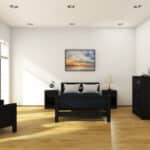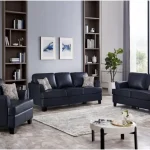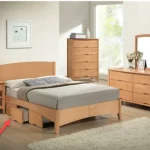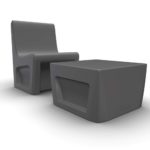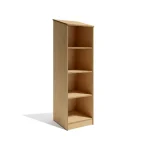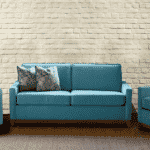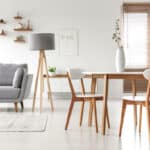Rotomolded vs. Metal vs. Wood Furniture: A Deep-Dive Comparative Guide for High-Use Facilities
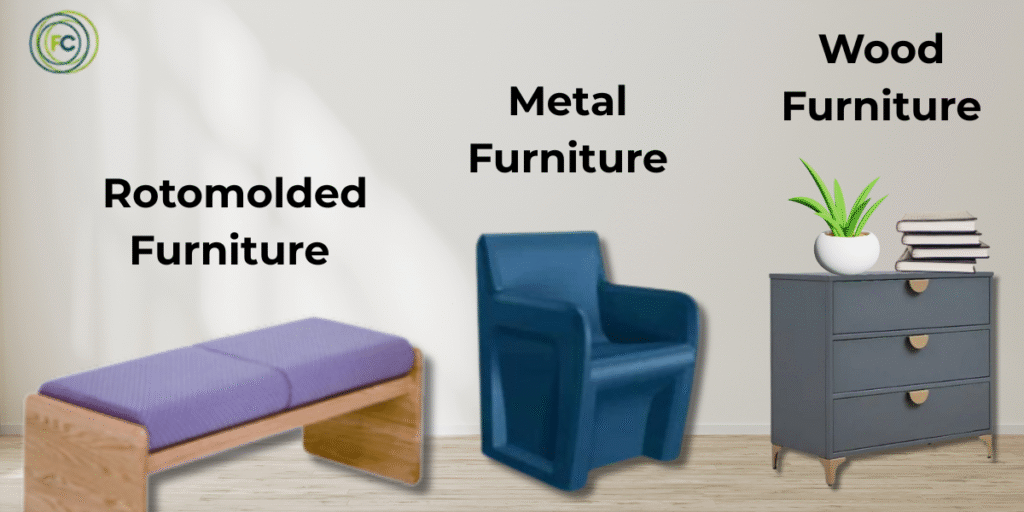
Choosing furniture for behavioral healthcare centers, group homes, and residential care facilities affects safety, comfort, and operating costs. The right material can reduce maintenance work, improve durability, and support budget and sustainability goals. This guide examines rotomolded furniture, metal furniture, and wood furniture, giving facility managers and designers a clear comparison for informed decisions.
Rotomolded Furniture in Institutional Settings
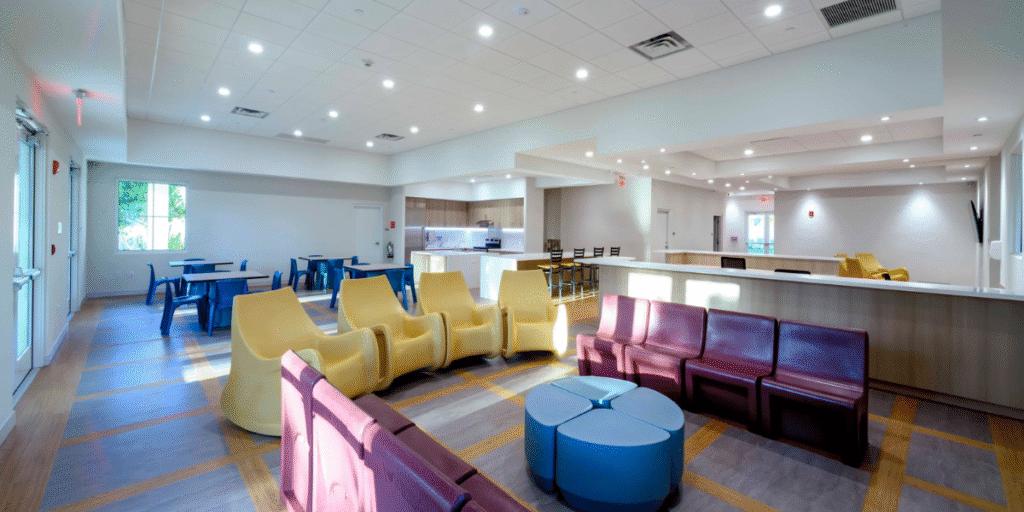
Rotomolded furniture uses rotationally molded polyethylene to create seamless, one-piece designs. It has gained popularity in healthcare and group homes because of its strength, low maintenance, and ability to handle heavy use.
Durability & Longevity
A major benefit of rotomolded furniture comes from its seamless design. Without joints or weak spots, it resists damage better than traditional furniture. It handles:
- Moisture and sun exposure
- Temperature swings
- Heavy daily use
Facilities looking for long-lasting furniture often rely on rotomolded designs to reduce maintenance and repair costs.
Maintenance & Hygiene
Cleanliness matters in healthcare and group homes. Rotomolded furniture has smooth, non-porous surfaces that resist stains and clean easily with standard disinfectants. Many call it maintenance-free furniture because it saves staff time and reduces upkeep costs.
Environmental & Cost Factors
While rotomolded furniture costs more upfront than wood or metal, its long life reduces replacement expenses. Recyclable polyethylene options also help meet sustainability goals.
Pros and Cons Summary
Pros:
- Durable for heavy use
- Simple to clean, resists chemicals
- Weather-resistant for indoor and outdoor spaces
- Lower long-term costs despite a higher initial price
Cons:
- Higher starting cost compared to metal or wood
Metal Furniture in High-Use Facilities
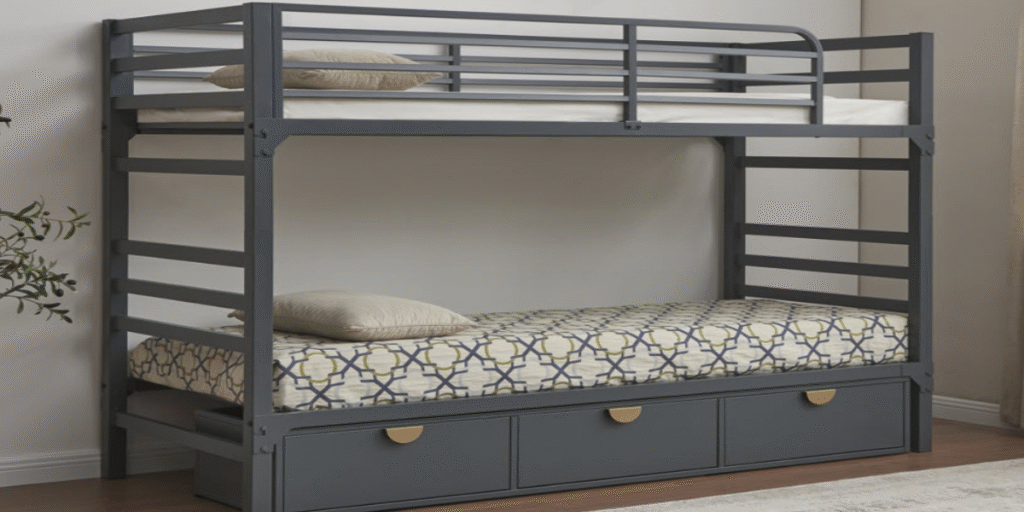
Metal furniture, like steel chairs, tables, and fixtures, is common in healthcare and communal areas. It offers strength and low maintenance, making it ideal for high-traffic dining areas and waiting rooms.
Durability & Strength
Steel holds up well under constant use. With protective finishes, metal furniture works indoors and outdoors, giving facilities long-lasting furniture that can handle tough conditions.
Maintenance & Usability
Metal furniture requires minimal care, with basic cleaning being sufficient, although untreated pieces may rust in damp conditions. Powder-coated or stainless finishes prevent corrosion and lengthen service life.
Environmental & Cost Factors
Steel is recyclable, so metal furniture can be an eco-friendly choice when responsibly sourced. Even though steel production leaves a carbon footprint, its durability reduces replacement and maintenance costs.
Pros and Cons Summary
Pros:
- Strong and long-lasting
- Easy to clean and maintain
- Weather-resistant with proper coatings
Cons:
- Heavy to move
- Can rust without protective finishes
Wood Furniture in Healthcare and Residential Care Settings
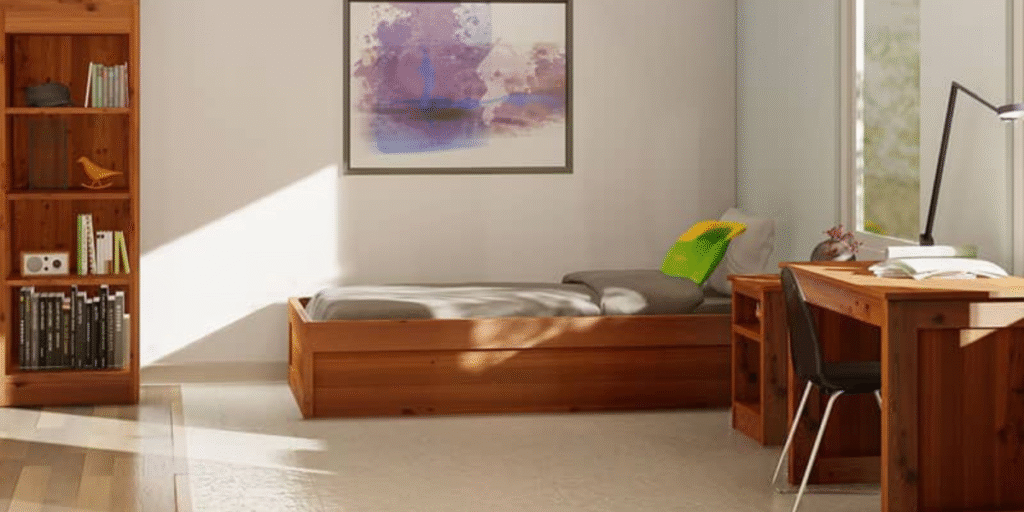
Wood furniture brings warmth and a homelike feel, making it popular in therapy rooms, private spaces, and residential settings in healthcare facilities.
Durability & Aesthetics
The strength of wood furniture depends on the type. Hardwoods like oak or teak last longer, while softer woods wear out faster. Even durable woods can warp or crack under constant stress. Despite these limits, wood adds comfort and character to group homes.
Maintenance Needs
Compared to rotomolded furniture or metal furniture, wood needs regular sealing, refinishing, and cleaning. It does not resist weather as well, so it suits indoor settings best.
Environmental & Cost Factors
Wood is renewable, but top-quality hardwoods can be expensive. Regular upkeep also raises long-term costs.
Pros and Cons Summary
Pros:
- Attractive, welcoming look
- Can last with good care
- Renewable material choices
Cons:
- Needs frequent maintenance
- Less practical for outdoor or heavy-use areas
Comparative Analysis: Rotomolded vs. Metal vs. Wood
Decision-makers need to compare durability, upkeep, costs, and environmental impact when choosing materials.
Rotomolded vs. Metal Furniture
- Rotomolded furniture is lighter and built with a seamless design that prevents dirt buildup and makes cleaning easy. It offers weather-resistant furniture qualities, standing up well to sun, rain, and temperature changes while keeping maintenance simple and costs predictable.
- Metal furniture provides dependable strength and is well-suited for high-use areas where durability matters. To keep it lasting in humid or outdoor conditions, facilities should choose pieces with protective coatings that prevent rust and maintain their weather-resistant furniture benefits.
Rotomolded vs. Wood Furniture
- Rotomolded furniture is durable and easy to maintain, making it ideal for facilities that need reliable, maintenance-free furniture for high-traffic areas. It stands up to constant use and does not require frequent upkeep, keeping long-term costs down.
- Wood furniture offers warmth and style, creating a welcoming environment in residential or therapeutic spaces. However, it demands consistent care and attention, unlike maintenance-free furniture, to preserve its appearance and strength over time.
Metal vs. Wood Furniture
- Metal furniture suits high-traffic spaces where strength, durability, and easy upkeep are essential. It delivers the toughness needed in busy institutional furniture settings like dining halls or waiting rooms while keeping cleaning simple and replacement needs low.
- Wood furniture offers warmth and style that enhance the look and feel of institutional furniture in therapy rooms or private areas. This space creates a friendly and inviting vibe for everyone, whether they live here or are just visiting, while also hitting the mark on comfort and design.
Practical Recommendations for Facility Managers and Designers
Selecting furniture means balancing budget, function, and resident needs. Based on the comparison:
- Choose rotomolded furniture for outdoor areas, common rooms, and spaces where minimal upkeep is important. Its durability and easy cleaning make it practical for furniture for group homes and other busy environments that need reliable, low-maintenance options.
- Pick metal chairs and tables for dining halls and busy communal areas. This type of institutional furniture withstands heavy use, supports large groups, and delivers long-term strength while remaining cost-effective for facility managers.
- Use wood furniture in counseling rooms, private areas, or settings where a warm, inviting atmosphere matters. It gives furniture for group homes a residential feel and works best in spaces that balance comfort, style, and daily functionality.
Consider long-term costs by weighing the upfront price against maintenance and replacement cycles.
Partnering With Furniture Concepts for Your Facility Needs
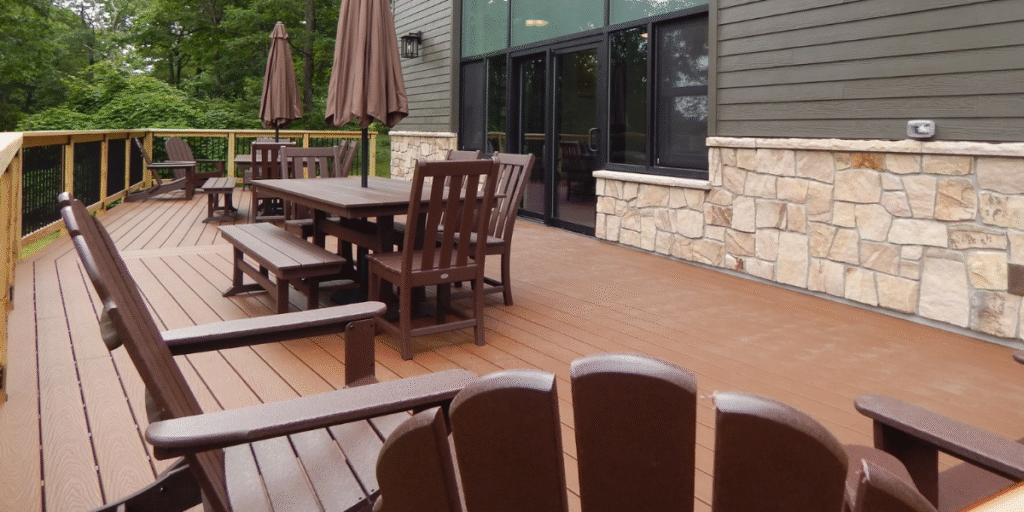
Furniture Concepts has supported behavioral healthcare, human services, and group living organizations for 25 years. We focus on institutional furniture that combines safety, function, and visual appeal for facilities of every size.
Our team helps facilities choose long-lasting furniture for heavy-use environments while keeping comfort and style in mind. Recommendations center on pieces that stand up to daily wear and reduce replacement needs over time.
We offer a wide selection of furniture for group homes and healthcare spaces so organizations can find solutions that match program goals and resident needs.
Our services include consultation, delivery, and setup. We work closely with administrators, designers, and managers to create inviting, functional environments tailored to specific care settings.
Facilities across behavioral health centers, transitional housing, and supportive housing rely on Furniture Concepts to build safer, more efficient, and more welcoming spaces.
Conclusion
Rotomolded, metal, and wood furniture each brings specific benefits to high-use facilities. Rotomolded designs offer durability and low upkeep, metal provides strength for high-traffic areas, and wood adds warmth and character for residential or therapeutic settings. Factoring in cost, environmental impact, and maintenance helps managers choose the best fit for their space.
Contact Furniture Concepts today for expert advice and dependable institutional furniture designed to last. Our team is ready to help you create safer, more comfortable environments that meet your facility’s needs.

